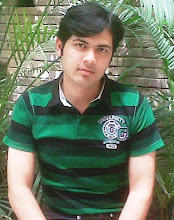
 The Reserve Bank of India was established on April 1, 1935 in accordance with the provisions of the Reserve Bank of India Act, 1934 with a share capital of Rs. 5 crores on the basis of the recommendations of the Hilton Young Commission. This commission submitted its report in the year 1926, though the bank was not set up for nine years.
The Reserve Bank of India was established on April 1, 1935 in accordance with the provisions of the Reserve Bank of India Act, 1934 with a share capital of Rs. 5 crores on the basis of the recommendations of the Hilton Young Commission. This commission submitted its report in the year 1926, though the bank was not set up for nine years. The share capital was divided into shares of Rs. 100 each fully paid which was entirely owned by private shareholders in the beginning.
Office of RBI :
The Central Office of the Reserve Bank was initially established in Kolkata but was permanently moved to Mumbai in 1937. It has 22 regional offices.
Nationalization of RBI:
With a view to have a cordinated regulation of Indian banking Indian Banking Act was passed in march 1949. To make RBI more powerful the Govt. of India nationalised RBI on January 1, 1949.
Office of RBI :
The Central Office of the Reserve Bank was initially established in Kolkata but was permanently moved to Mumbai in 1937. It has 22 regional offices.
Nationalization of RBI:
With a view to have a cordinated regulation of Indian banking Indian Banking Act was passed in march 1949. To make RBI more powerful the Govt. of India nationalised RBI on January 1, 1949.
The general superintendence and direction of the Bank is entrusted to Central Board of Directors of 20 members, the Governor and four Deputy Governors, one Government official from the Ministry of Finance, ten nominated Directors by the Government to give representation to important elements in the economic life of the country, and four nominated Directors by the Central Government to represent the four local Boards with the headquarters at Mumbai, Kolkata, Chennai and New Delhi.
Local Boards consist of five members each Central Government appointed for a term of four years to represent territorial and economic interests and the interests of co-operative and indigenous banks.
Local Boards consist of five members each Central Government appointed for a term of four years to represent territorial and economic interests and the interests of co-operative and indigenous banks.
 Functions of RBI
Functions of RBI1. Issue of Notes: Under Section 22 of the Reserve Bank of India Act, RBI has sole right to issue currency notes of various denominations except one rupee notes.
The One Rupee note is issued by Ministry of Finance and It bears the signatures of Finance Secretary, while other notes bear the signature of Governor RBI.
However RBI is the only source of legal tender money because distribution of one rupee notes and coins and small coins all over the country is undertaken by the Reserve Bank as agent of the Government.
Issue Department:
Issue Department:
Read more...















































